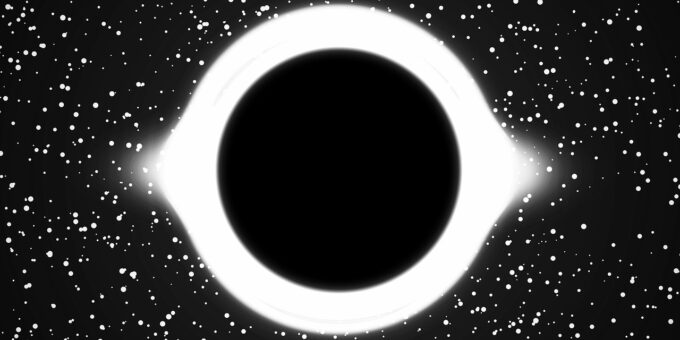
The inside of a black hole is currently not fully understood, as the laws of physics as we know them break down at the singularity at the centre of the black hole. However, based on our current understanding of black holes, we can describe what is believed to be inside a black hole.
At the centre of a black hole lies the singularity, which is a point of infinite density, zero volume and infinite gravity. The formation of a singularity inside a black hole is thought to occur during the collapse of a massive star. When a massive star runs out of fuel, it can no longer generate enough heat and pressure to counteract the force of gravity that is pulling it inward. The star begins to collapse under its own weight, and if it is massive enough, the collapse will continue until the star becomes a black hole.
As the star collapses, the density and temperature at the center increase rapidly. Eventually, the density becomes so great that the gravitational force is strong enough to overcome the electromagnetic force that keeps atoms from collapsing. The atoms are crushed, and the electrons and protons combine to form neutrons. At this point, the collapse is unstoppable, and the matter continues to collapse until it reaches the singularity at the center of the black hole.
Inside the singularity, the laws of physics as we know them break down, and we do not currently have a theory that can describe what happens inside. It is believed that the singularity is surrounded by an event horizon, which is the point of no return for anything that gets too close to the black hole. At this point, the gravitational force is so strong that not even light can escape, and the matter is trapped inside the black hole forever. Anything that crosses the event horizon is sucked into the singularity and is lost forever.
Inside the event horizon, the gravitational force becomes so strong that it warps space and time, leading to a phenomenon known as “spaghettification.” As an object approaches the singularity, the gravitational force on its near side becomes much stronger than on its far side, causing the object to be stretched out into a long, thin shape like spaghetti.
The mechanism of the event horizon is based on the concept of the Schwarzschild radius, named after the German physicist Karl Schwarzschild. According to his theory, the radius of the event horizon is directly proportional to the mass of the black hole.
The event horizon is not a physical object but rather a mathematical boundary that marks the point of no return. It is a critical feature of a black hole, as it defines the boundary between the observable universe and the unknown region beyond.
It’s important to note that our current understanding of black holes is based on theoretical models and indirect observations, as we cannot directly observe the inside of a black hole. Therefore, our understanding of what is inside a black hole may change as our knowledge of physics and our ability to observe these objects improves.

I have seen blackhole in the lots of movies but the movie name called “Interstellar” wonderfully explained it. I’m surprised that you have explained it so well that I can easily relate it with the movie. Lovely post by lovely writer.